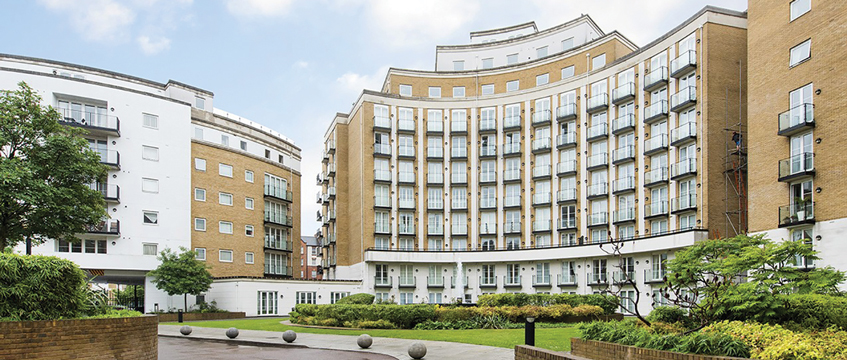A common sense approach to structural detachment
Legal
by
Elizabeth Dwomoh
In LM Homes Ltd and others v Queen Court Freehold Company Ltd [2020] EWCA Civ 371; [2020] PLSCS 41, the Court of Appeal emphasised that the statutory scheme surrounding collective enfranchisement claims should be “interpreted and applied to provide a clear and certain outcome”. The court had a duty to construe the Leasehold Reform, Housing and Urban Development Act 1993 (the 1993 Act) “fairly, and if possible, with a view to making it effective to confer on tenants the advantages that parliament must have intended them to enjoy”.
In Consensus Business Group (Ground Rents) Ltd v Palgrave Gardens Freehold Company Ltd [2020] EWHC 920 (Ch); [2020] PLSCS 76, the High Court had regard to this common sense approach.
The dispute
In LM Homes Ltd and others v Queen Court Freehold Company Ltd [2020] EWCA Civ 371; [2020] PLSCS 41, the Court of Appeal emphasised that the statutory scheme surrounding collective enfranchisement claims should be “interpreted and applied to provide a clear and certain outcome”. The court had a duty to construe the Leasehold Reform, Housing and Urban Development Act 1993 (the 1993 Act) “fairly, and if possible, with a view to making it effective to confer on tenants the advantages that parliament must have intended them to enjoy”.
In Consensus Business Group (Ground Rents) Ltd v Palgrave Gardens Freehold Company Ltd [2020] EWHC 920 (Ch); [2020] PLSCS 76, the High Court had regard to this common sense approach.
The dispute
Pursuant to section 13 of the 1993 Act, qualifying tenants must give to the reversioner an initial notice specifying their intention to exercise their right to enfranchise. The notice must comply with section 13(3) of the 1993 Act. In particular, section 13(3)(a) requires the notice “to specify and be accompanied by a plan showing” (i) the premises and (ii) any property proposed to be acquired by virtue of section 1(2)(a).
Palgrave Gardens was a development comprising five residential blocks. Externally, the blocks appeared to be attached, but were independent self-supporting structures, separated by movement joints. A basement car park ran beneath all of the blocks, extending underground beyond the ground level footprint of the blocks.
In December 2016, 182 tenants of Palgrave Gardens sought to exercise their right to collectively enfranchise and served a notice pursuant to section 13 of the 1993 Act on their reversioner, Consensus Business Group (Ground Rents) Ltd (CBGGR). The notice claimed the premises of which the freehold was to be acquired as “shown edged in blue” on the plan, but it further noted that the plan only showed the above-ground footprint of the building, thereby failing to identify the car park.
CBGGR denied the tenant’s claim in its counter-notice. It argued that the notice served by the tenants lacked clarity because it failed to state whether the specified premises included the car park. CBGGR further contended that the premises specified in the notice did not consist of a self-contained building or part of a building.
In the county court, Judge Eaton Turner found “on balance” that the notice restricted the claim to only the ground floor outline, excluding the car park. The tenant’s nominee purchaser, Palgrave Gardens Freehold Company Ltd (PGFC), was allowed to amend the notice pursuant to paragraph 15 of schedule 3 to the 1993 Act.
Construing the amended notice only, the judge found that it related to a self-contained building for the purposes of section 3 of the 1993 Act. He concluded that the blocks comprised a single building, which included the car park and made a declaration that the tenants were entitled to exercise their right to collectively enfranchise. CBGGR appealed.
Validity of the notice
In accordance with the guidance given in LM Homes, the High Court adopted a common sense approach in its determination of the issues on appeal.
In relation to the validity of the original notice, the High Court underscored that the correct test was to consider how a “reasonable recipient” would have understood the notice. Construing the notice from the viewpoint of the reasonable recipient landlord, it was sufficiently clear that the premises to be acquired under section 1(1) of the 1993 Act was limited to the ground-floor footprint of the blocks. Section 13(3)(a) required the initial notice to “specify and be accompanied by a plan showing” the relevant premises and property to be acquired. The accompanying plan clearly specified the relevant premises and the reasonable landlord would have focused on the plan. Accordingly, the reasonable landlord would have understood from the plan that the car park was excluded.
The notice could, however, be amended in accordance with paragraph 15 of schedule 3 to the 1993 Act. Judge Eaton Turner had been correct to allow the amendment to include the car park, which, on the facts of the case, was part of the specified premises.
Structurally detached
Analysing the issue of structural detachment, the court noted that the first step was to identify the premises said to constitute the building (or part of the building). The next step was to identify whether the premises was self-contained or not. That was determined by reference to whether it was structurally detached, and that was not simply a question for structural engineers nor was it dependent on the existence of structural interdependence. It was a question of fact and law.
Relying on LM Homes, the High Court noted that even if the blocks were structurally detached, any enfranchisement of the blocks would, as a minimum, include the airspace above it and the subsoil beneath it. Consequently, in the present claim this included the basement car park.
On the facts of the case, the High Court found that the blocks and car park constituted a single self-contained building that was structurally attached at basement level.
Key point
Whether a building is structurally detached was not simply a question for structural engineers and was not dependent on the existence of structural interdependence.
Elizabeth Dwomoh is a barrister at Lamb Chambers











